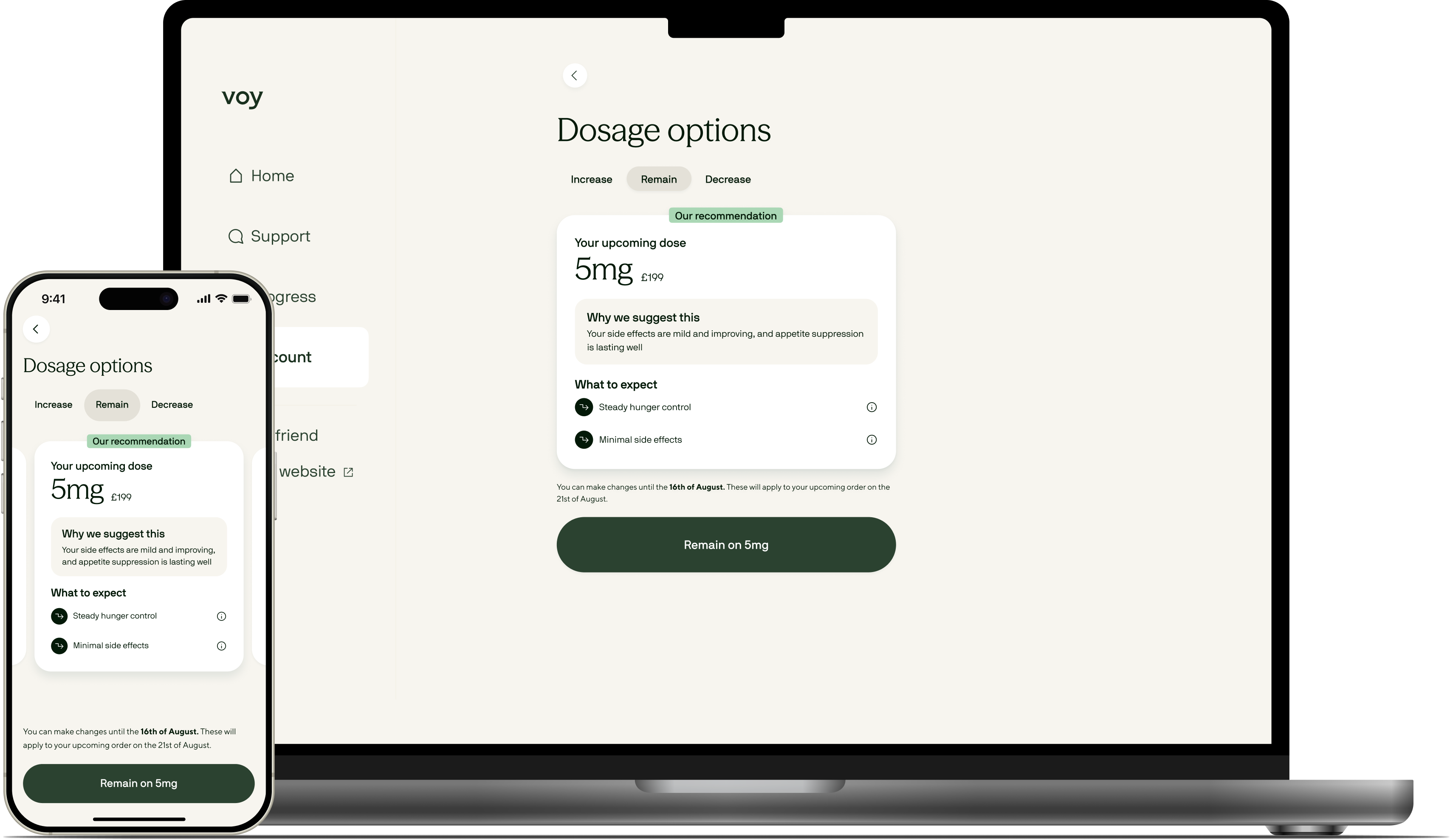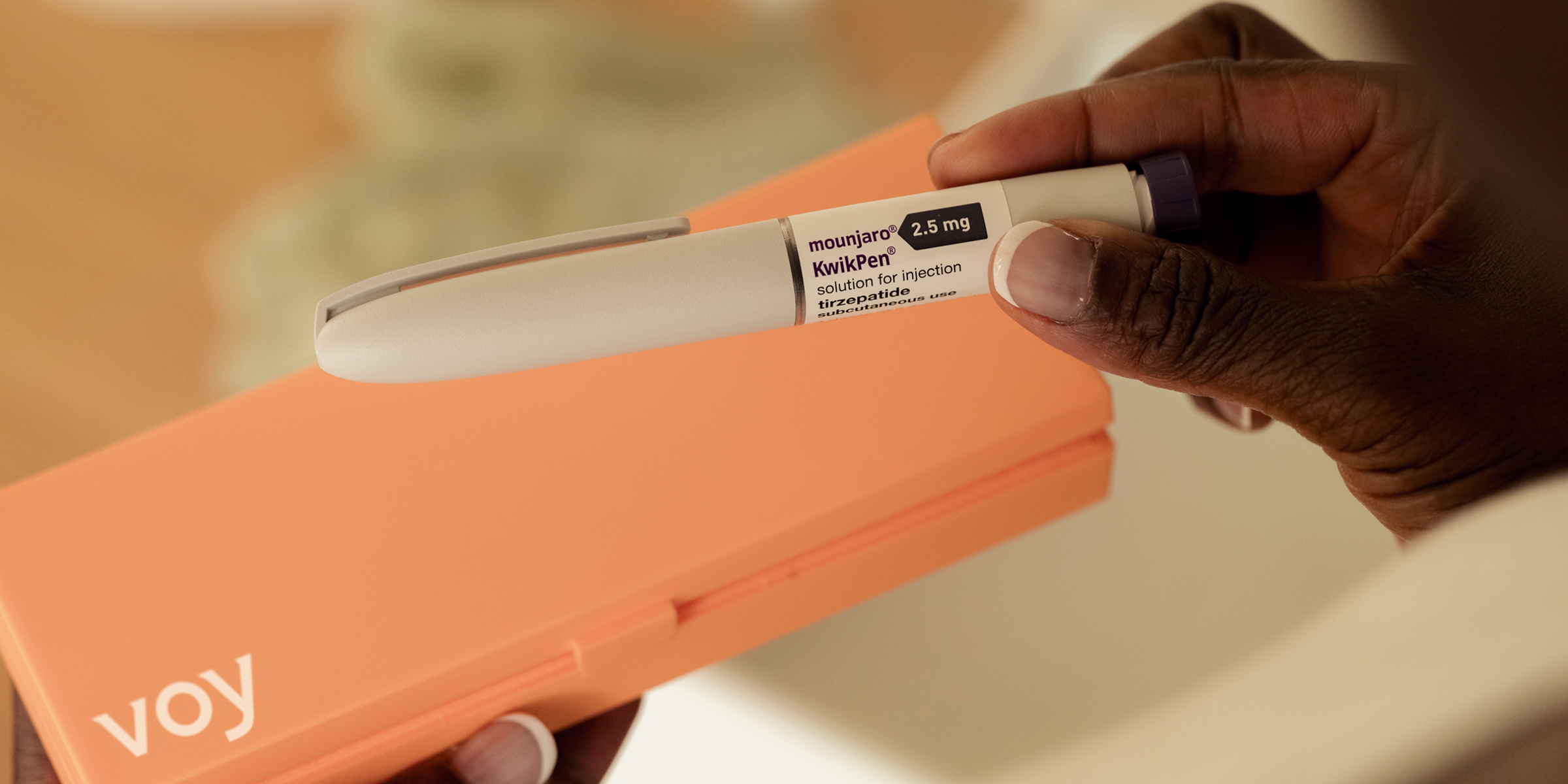
What are GLP-1s, and what's VOY?
GLP-1s, such as Ozempic and Mounjaro, are appetite suppressant treatments; when paired with behavioural change frameworks, they can help individuals experiencing extreme obesity lose weight rapidly. These treatments saw a boom in 2022 with search volumes for "weight loss injections" growing by 170% YoY.
As a result, that year, MANUAL chose to expand into weight loss as a health category. It was an immediate success; however, unlike its other health categories, ~80% of customers were female, all of whom were organically acquired, a sign of the significant demand for GLP-1 treatments, which were unavailable with all female-led providers.
However, with the new customer segment skyrocketing in growth, came an increase in support contacts from women, confused by our brand and whether the treatment was exclusively for male patients. To counter this, 'VOY' was created as a gender-agnostic sister brand offering, focusing purely on the weight-loss GLP-1 space.
My role
For this initiative, I worked closely with my team of FE and BE developers, PM, our heads of Patient Experience and Clinical Services, as well as our Strategy & Ops Manager for Weight Loss.
Scope
This project faced significant constraints and challenges from the outset. Despite testing the feature e2e, the tech team made an oversight by not accounting for the human in the pharmacy approving prescriptions early.
As a result, when we first launched, there were many cases of incorrect doses and prices rendering on the manage orders page. After several months, we managed to resolve this issue; however, it temporarily increased support tickets, thereby having the adverse effect of increasing the burden on CS rather than reducing it, along with CS operational costs.
Additionally, when it came to feature availability, we chose to focus on our Mounjaro patients, as they were the majority of our category customer base.
So what's the big deal about doses?
Typically, when starting on GLP-1s like Mounjaro, patients begin with a base dose of 2.5mg. They inject themself once every week for four weeks, automatically increasing at the end of each cycle by 2.5mg till they reach 15mg. This allows them to safely adjust to the appetite suppression and potential side effects as they increase the dose.

However, we noticed two key issues
- Customers had no way to self-manage their dose aside from calling customer service, with monthly dose-related ticket volumes reaching 2,500 / month before the feature launch making up 9.9% tickets collectively.
- Sometimes, even after making a change via CS, the pharmacy had already sent the original dose. Consequently, CS would then have to send the correct dose, resulting in a loss of ~£308K / month; the reason for this number slipping past ops is that when represented as a percentage, this came to 1.3% of our monthly orders seeming insignificant to our ops team.

These problems collectively presented a strong case for improving the dose experience, our hypothesis being: if we could increase price visibility and introduce a way to have a say over whether they'd like to increase, maintain, or decrease their dose, this would increase customer confidence, in turn reducing the number of dose-related tickets and revenue lost from incorrect doses being sent.
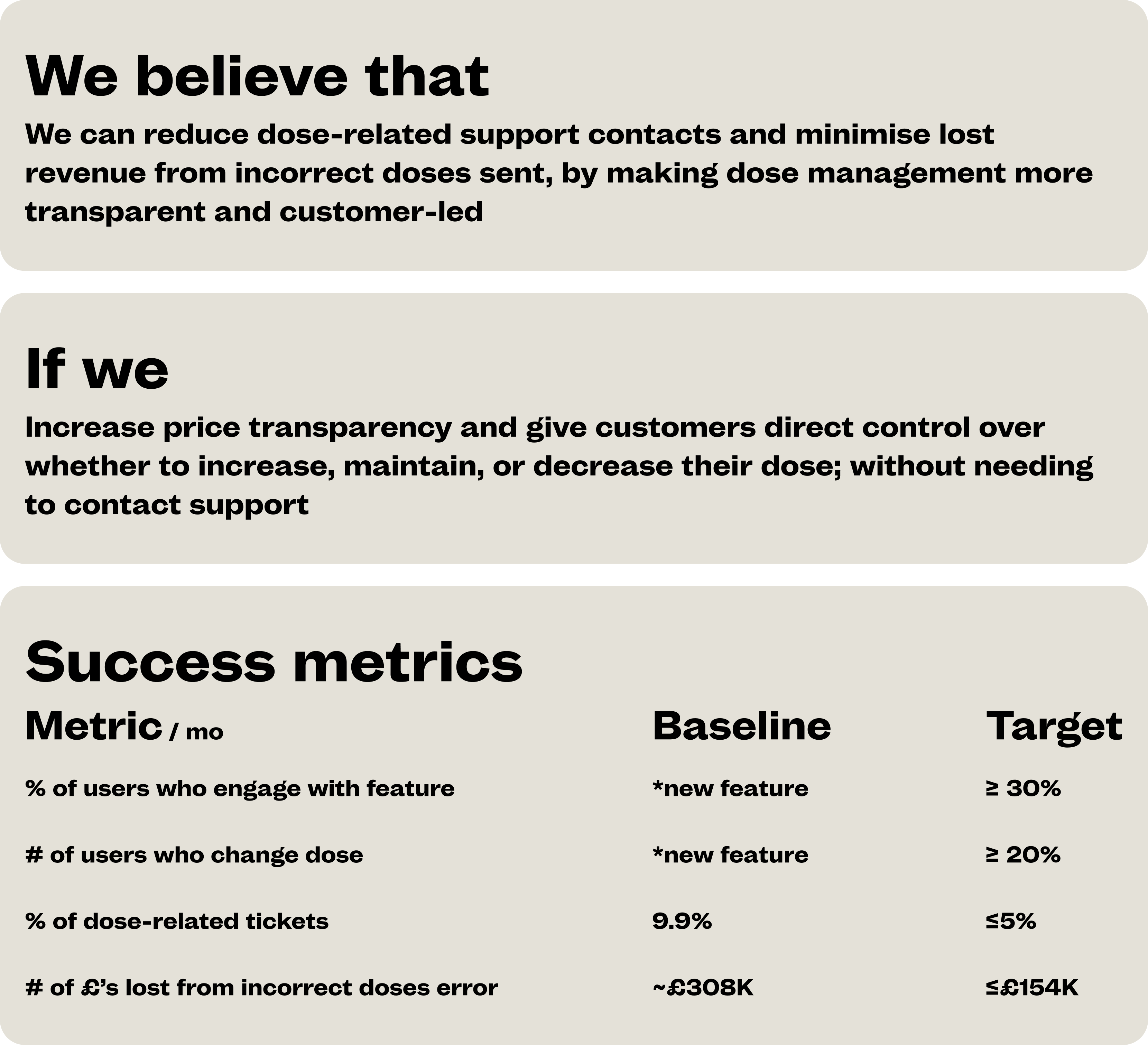
Searching for survivors
After agreeing on deliverables with my product manager, I worked with our head of PX to identify 5 customers who had changed their dose to test a prototype against.
Our tested assumptions:
- Participant can navigate successfully to the dosage management feature.
- Participant can successfully change their dose.
- Participant can successfully check back on the dose they set and change it again, should they wish.
- Participant can successfully open up the story model, explaining the feature.
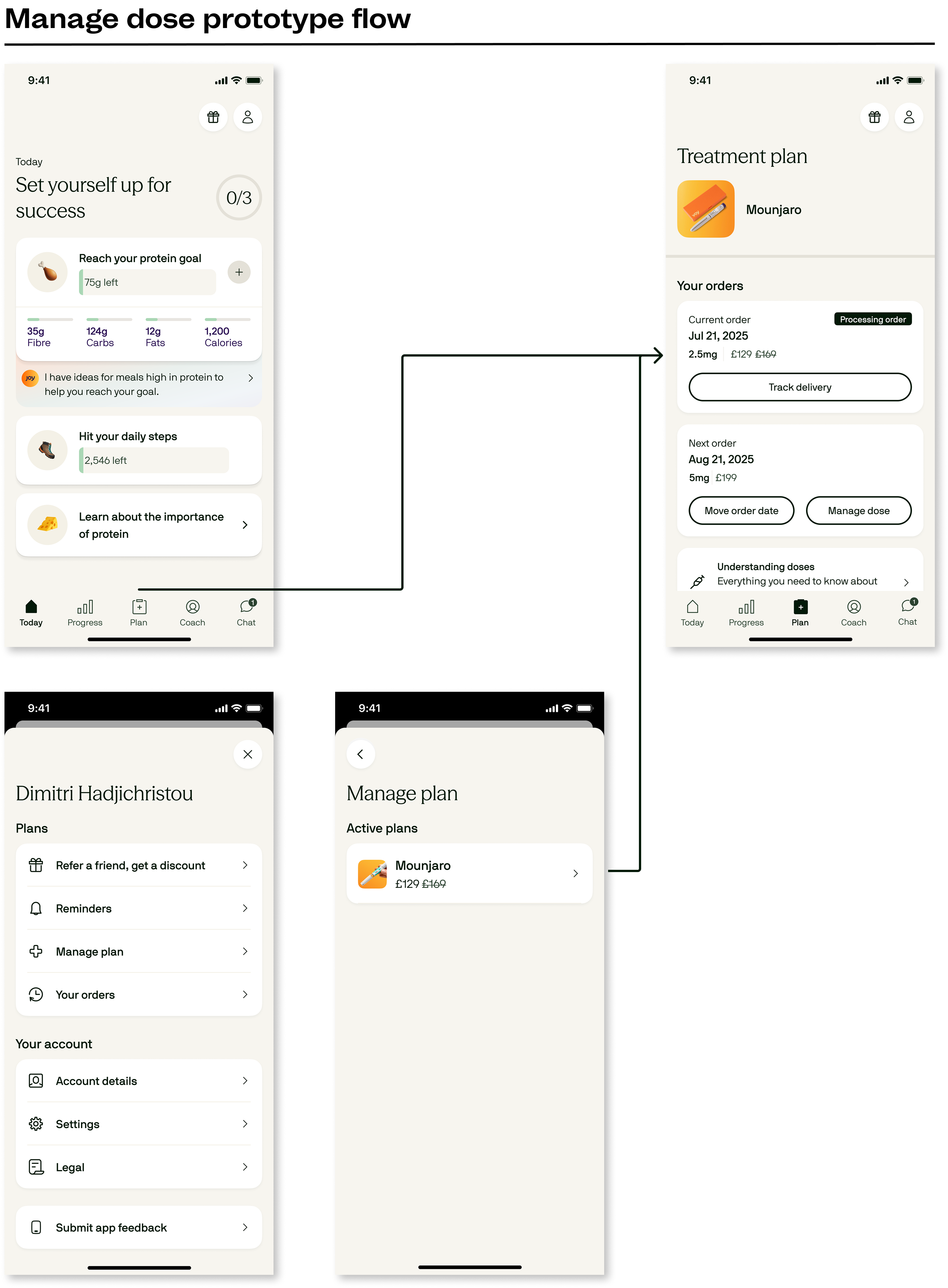
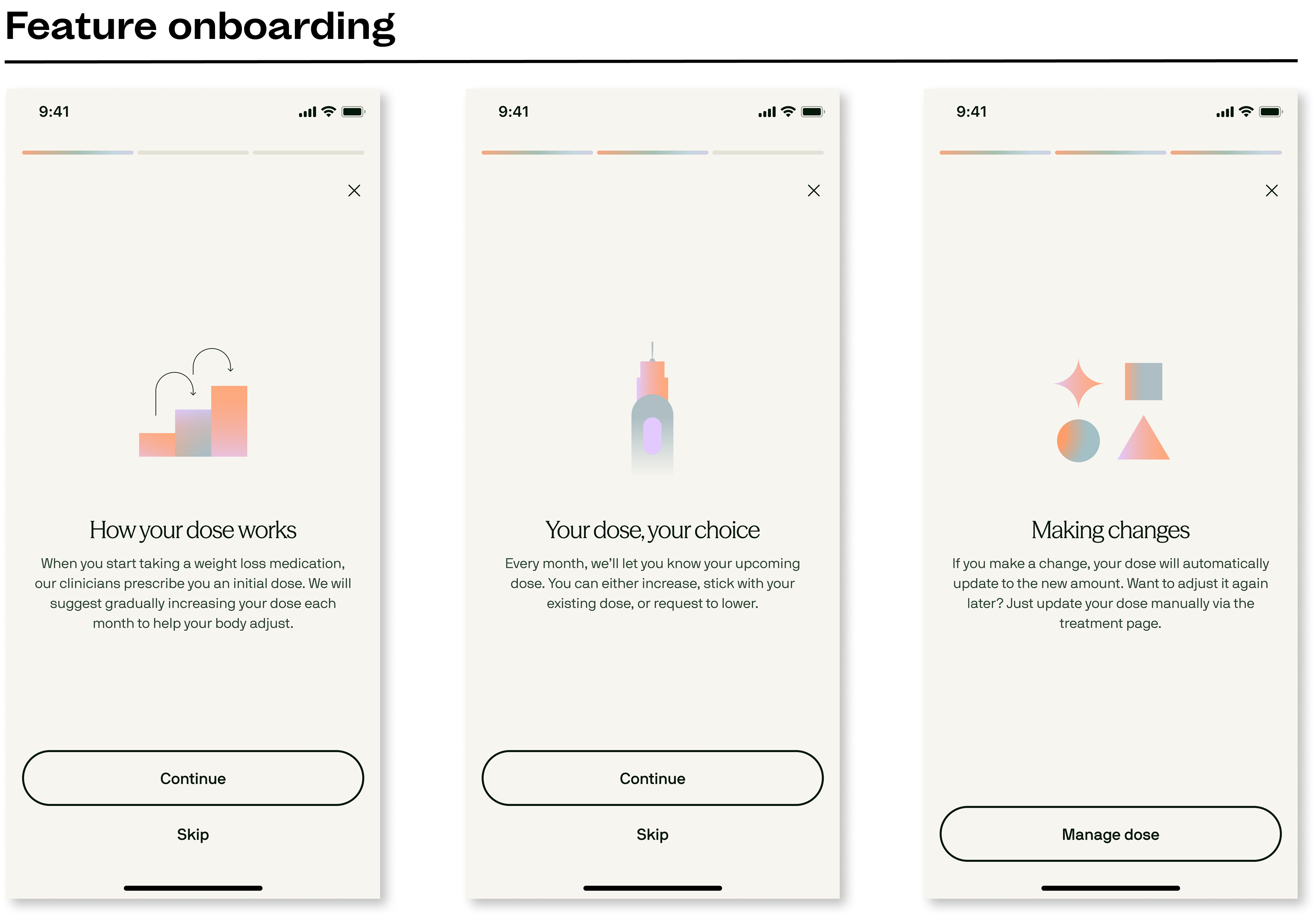
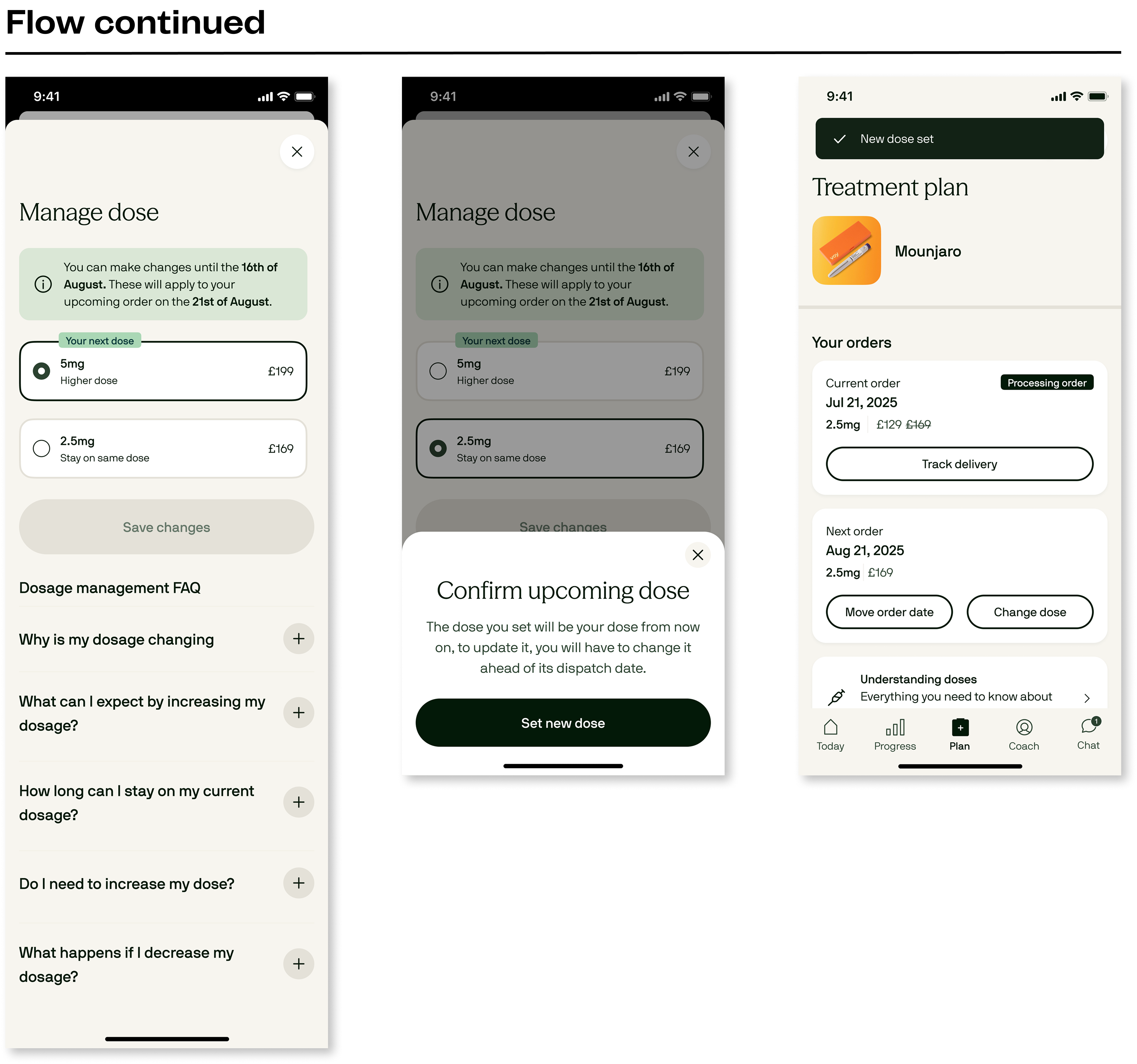
All participants completed the tasks. Recordings were converted into Dovetail reports to provide playback of any additional insights, with a key one being a desire for better education on why the price of treatment increases as the dose increases. A pricing and side effects FAQ were added separately to cover this.
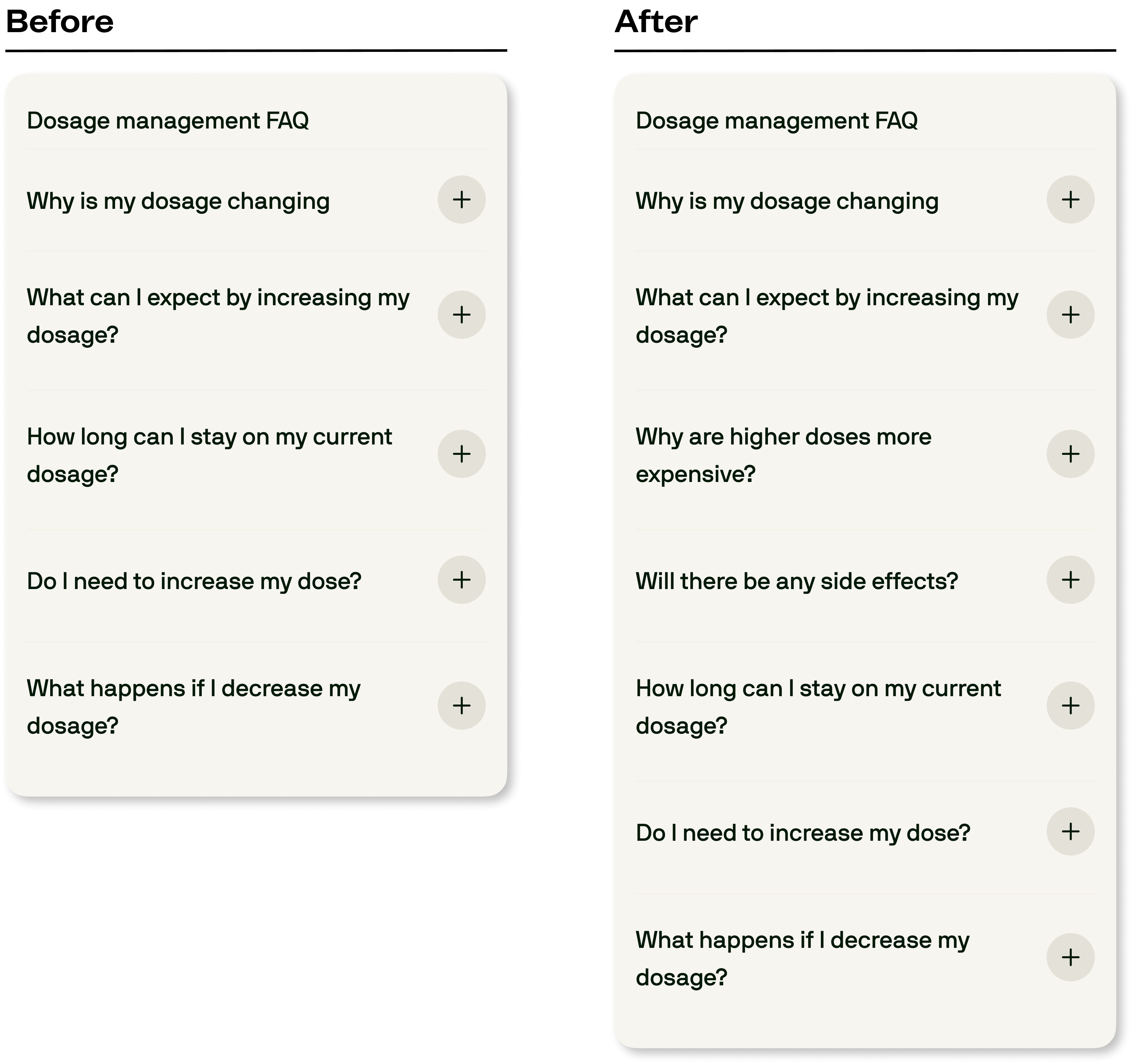
Gain... but with (some) pain
To ensure a safe launch we ran e2e staging testing and a gradual feature flag rollout, reaching 80% of users by month three with ~7,000 dose change requests. However, we encountered an operational edge case.
Prescriptions were being approved before previous orders had shipped. Causing the subscription to jump ahead by two dose steps, e.g., from 7.5mg straight to 10mg, leaving the prior stuck in limbo. We'd missed this edge case because, during testing, we hadn't accounted for the human in the loop approving the prescription early.
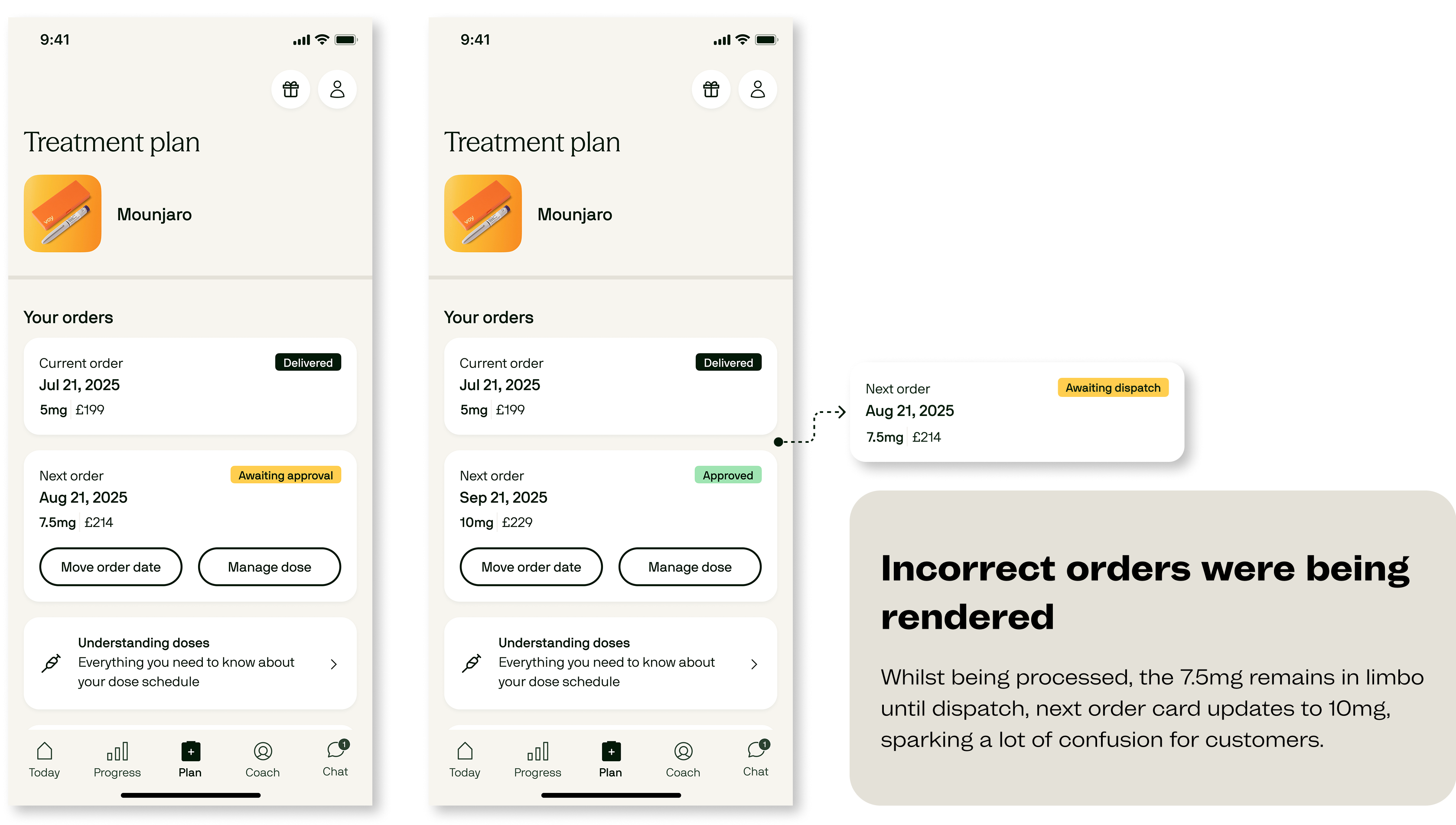
In turn, dose contacts spiked to ~13%, so tech's immediate action was to course correct as quickly as possible. The fix was a new calculation tool that used the latest fulfilled dose to determine the next, ensuring correct display and dispatch every time. Despite this issue, the feature introduction still showed promise with engagement and dose change request metrics either exceeding or just falling shy of their targets.

Ding, ding, ding... round 2
As the FE-BE issues were implementing their solution in the background, I moved on to delivering other medical journey features, one of which was a side effects tracker. After price, side effects are VOY's top reason for cancelling, accounting for 10% of them.
The tracker, allowed patients to log their side effects and severity; and signpost them to immediate advice from our AI agent 'Joy' or, if extremely severe, guide them to our support hotline, which has successfully solved ~80% of all reported side effects.
A usability test was conducted, which proved successful, uncovering additional insights. One being that all participants had chosen to stay on their current dose for ~3 months or planned to do so with their upcoming dose, primarily driven by two factors: 1) satisfaction with their weight loss or appetite suppression; 2) side effect concerns as their dose increased.

Let's ask the people
To better understand dose decision-making, I ran a survey through our WhatsApp group of 60 active VOY customers, asking whether they had automatically increased their GLP-1 dose every month or chosen to divert from this, and why. The goal was to uncover real-world reasoning behind dose behaviour.
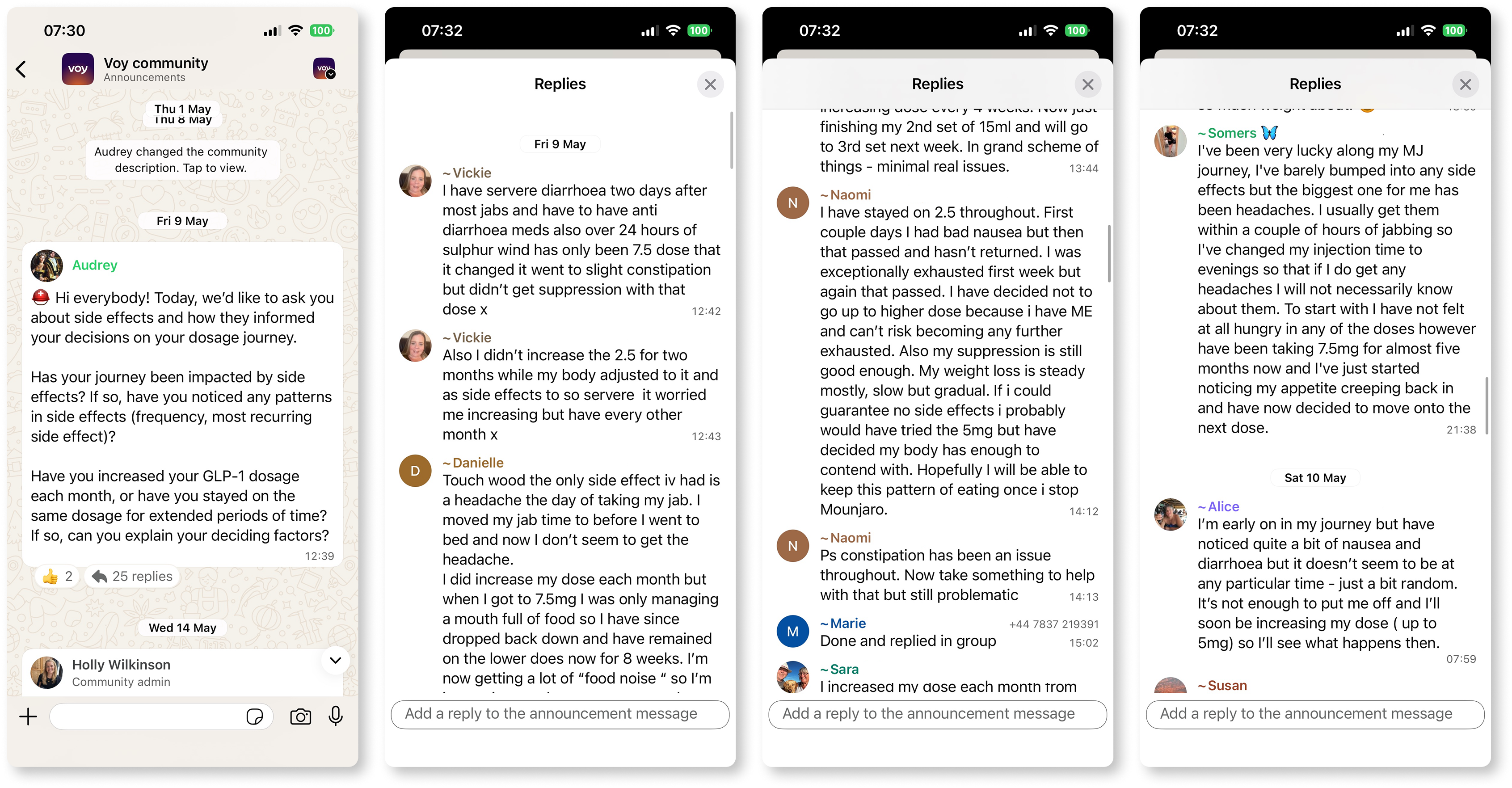
Responses showed that 50% increased monthly unless symptoms disrupted their experience. Meanwhile, 30% chose to hold at a dose for 2–3+ months to manage tolerability and maintain appetite suppression. The remaining 20% said they had increased too quickly and opted to reduce their dose for relief.

These insights highlighted an opportunity to transition the dose management feature from a simple price-based decision to a recommendation-based one, built on the customer's appetite suppression and side effect data.
Additionally, we saw an opportunity to help customers truly find the best dose for them, keeping side effects at bay, and maintaining appetite suppression for an extended period before increasing.
Updating our hypothesis, we chose to set more ambitious goals with our engagement & dose change targets this time around, especially as we now had resources for app push notifications.

Doctor's orders
Collaborating with the head of clinical services and her team, a refined questionnaire was mapped out along with a scoring matrix, indicating which dose recommendation to make based on the patient's experience.
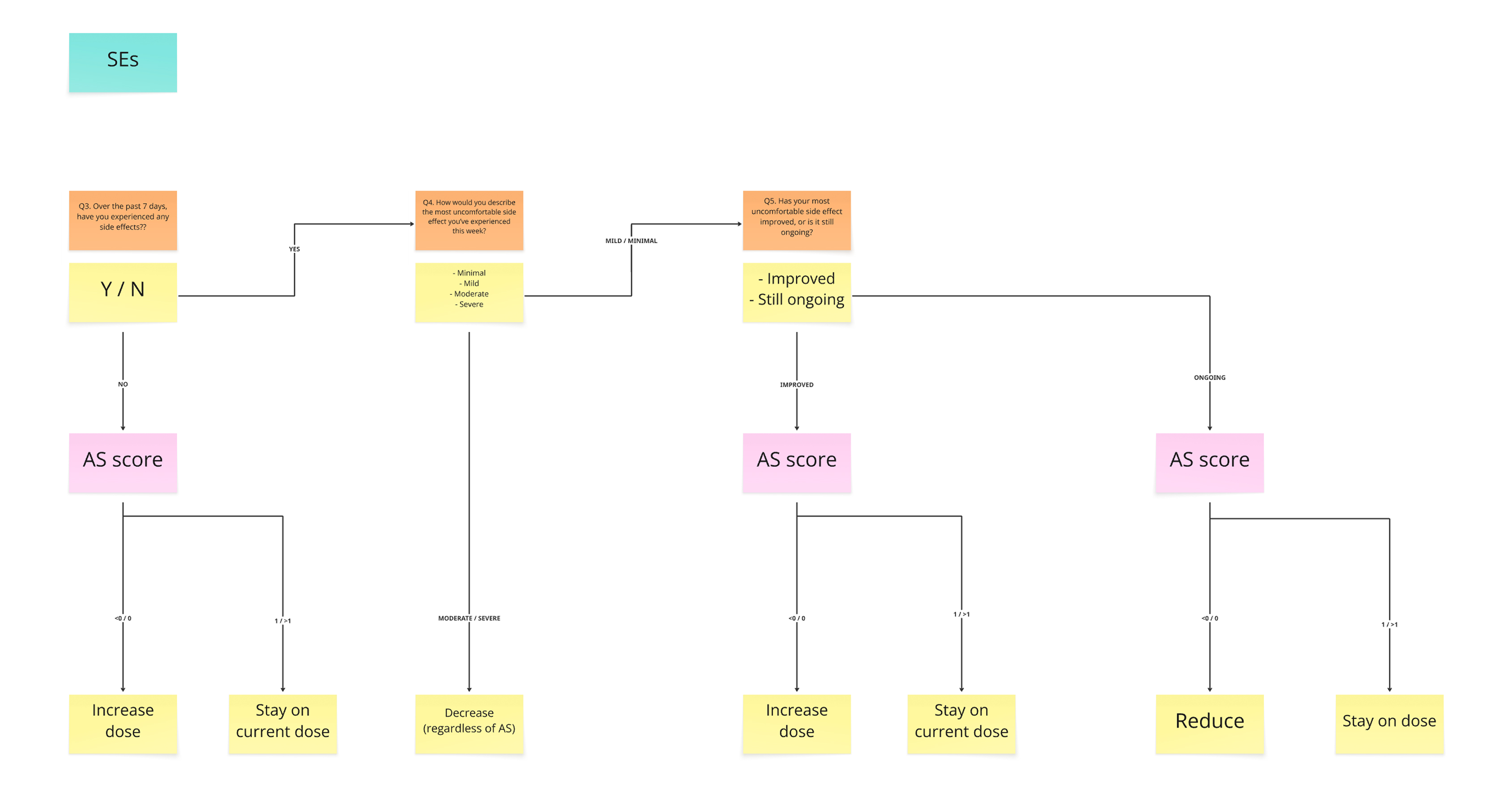
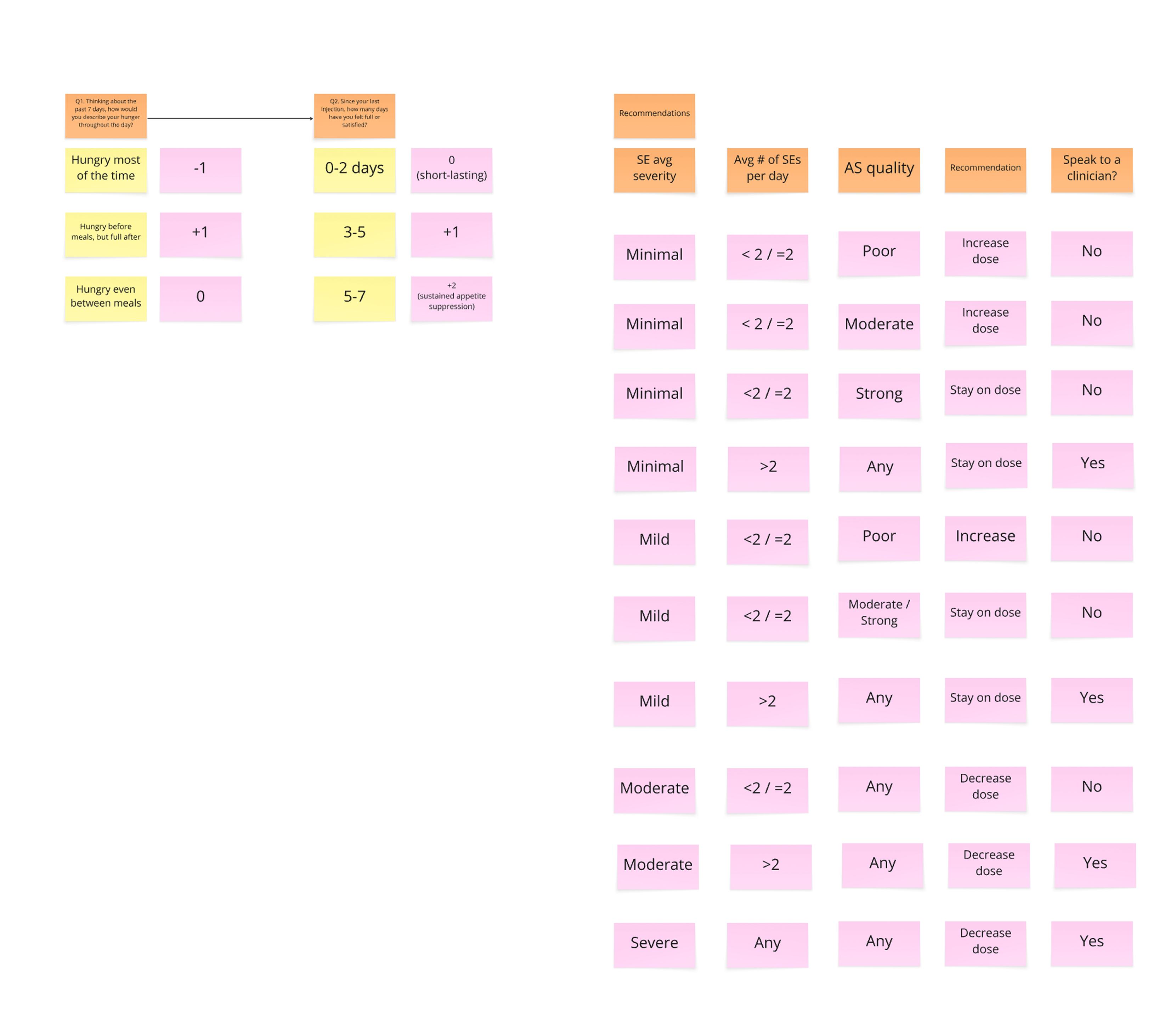
From there, I created early interface concepts and prototypes, sharing them in regular feedback loops with stakeholders across medical, product, and operations.
The final designs included push notifications, a dismissible home tab pop-up overlay if ignoring the push, a simple questionnaire, and a polished recommendation screen that elaborates on the reasons behind it, along with high-level descriptions of the impact on side effects and appetite suppression. The customer could dive in further by tapping the info icon.
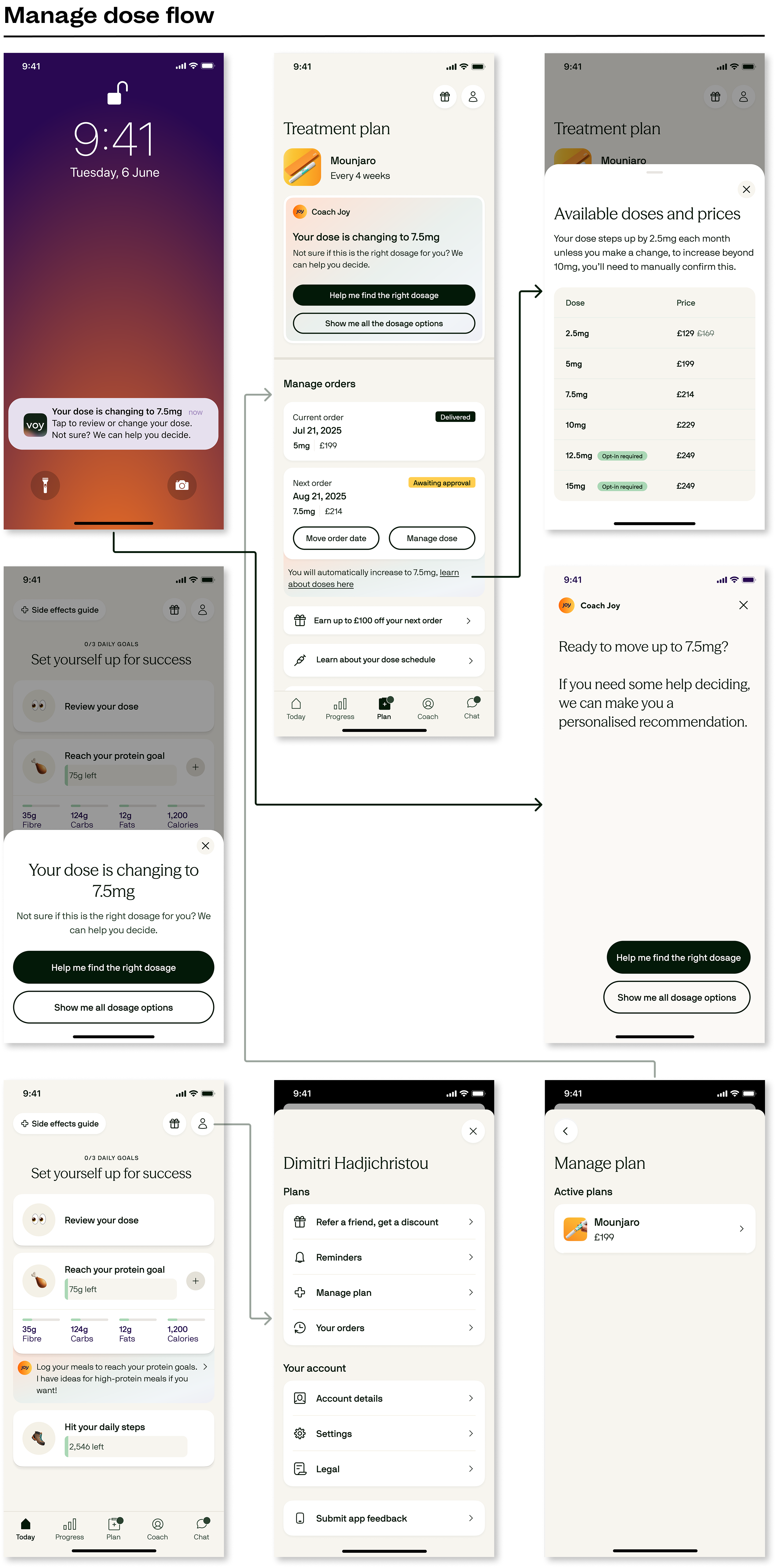
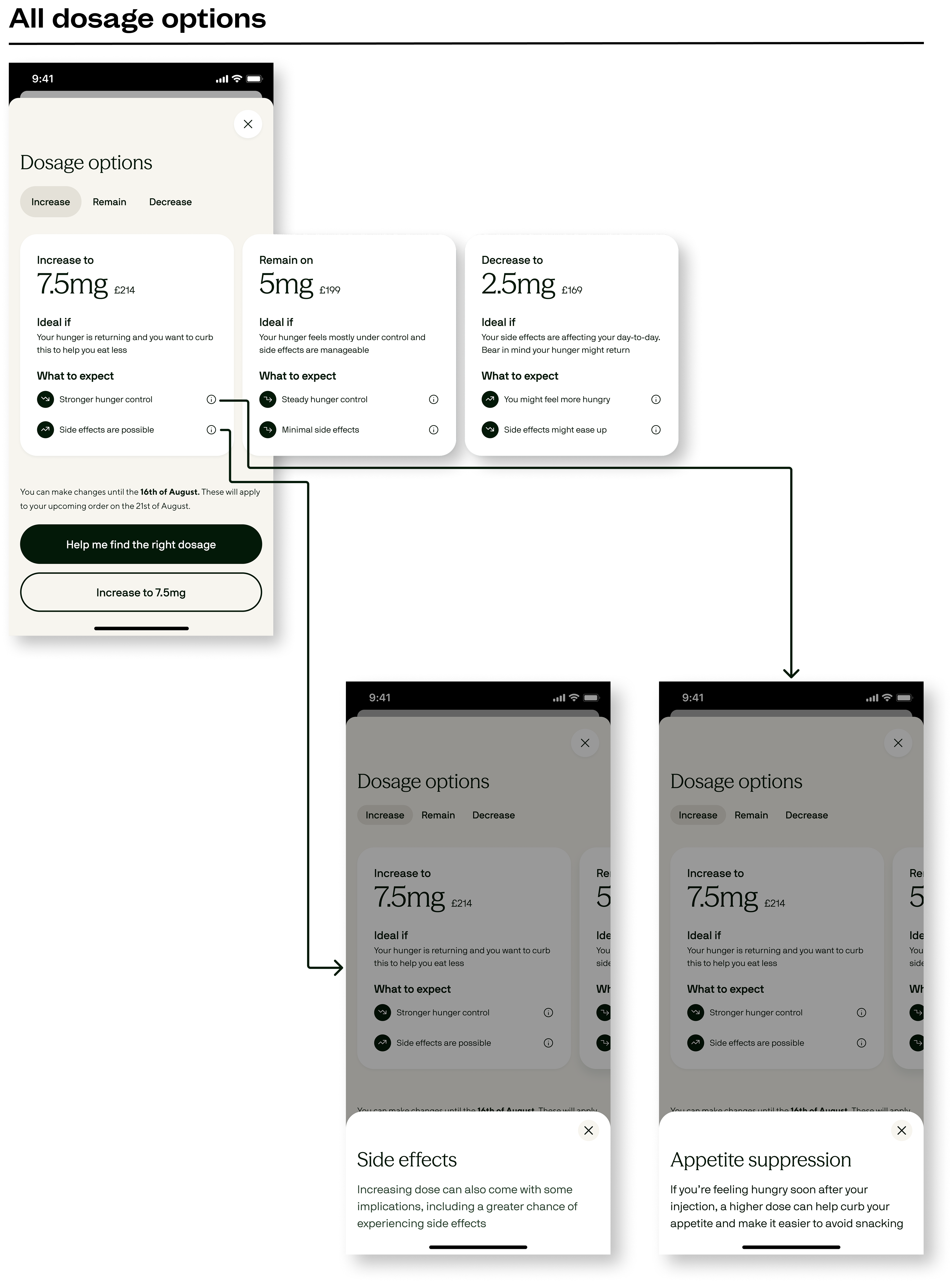
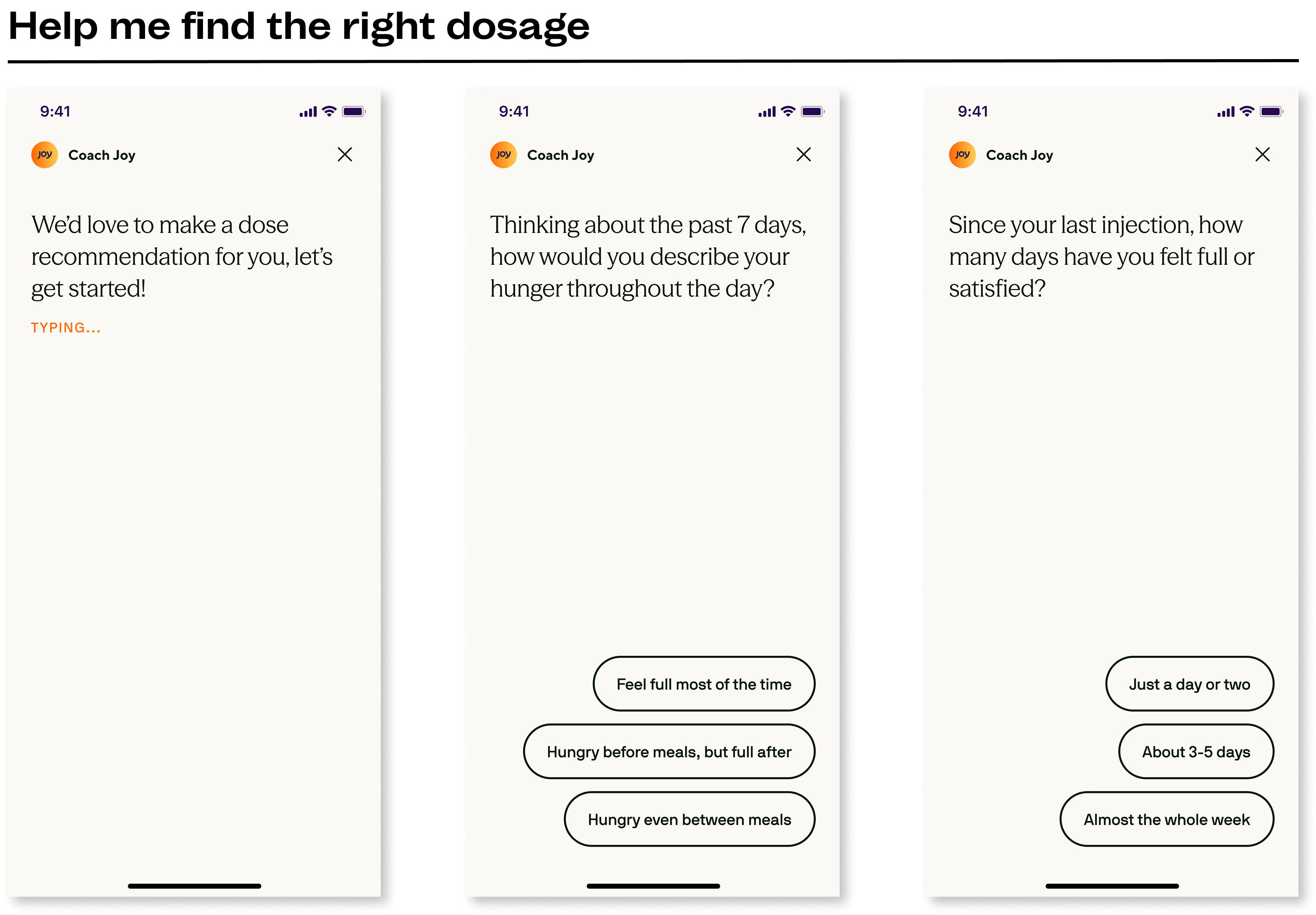
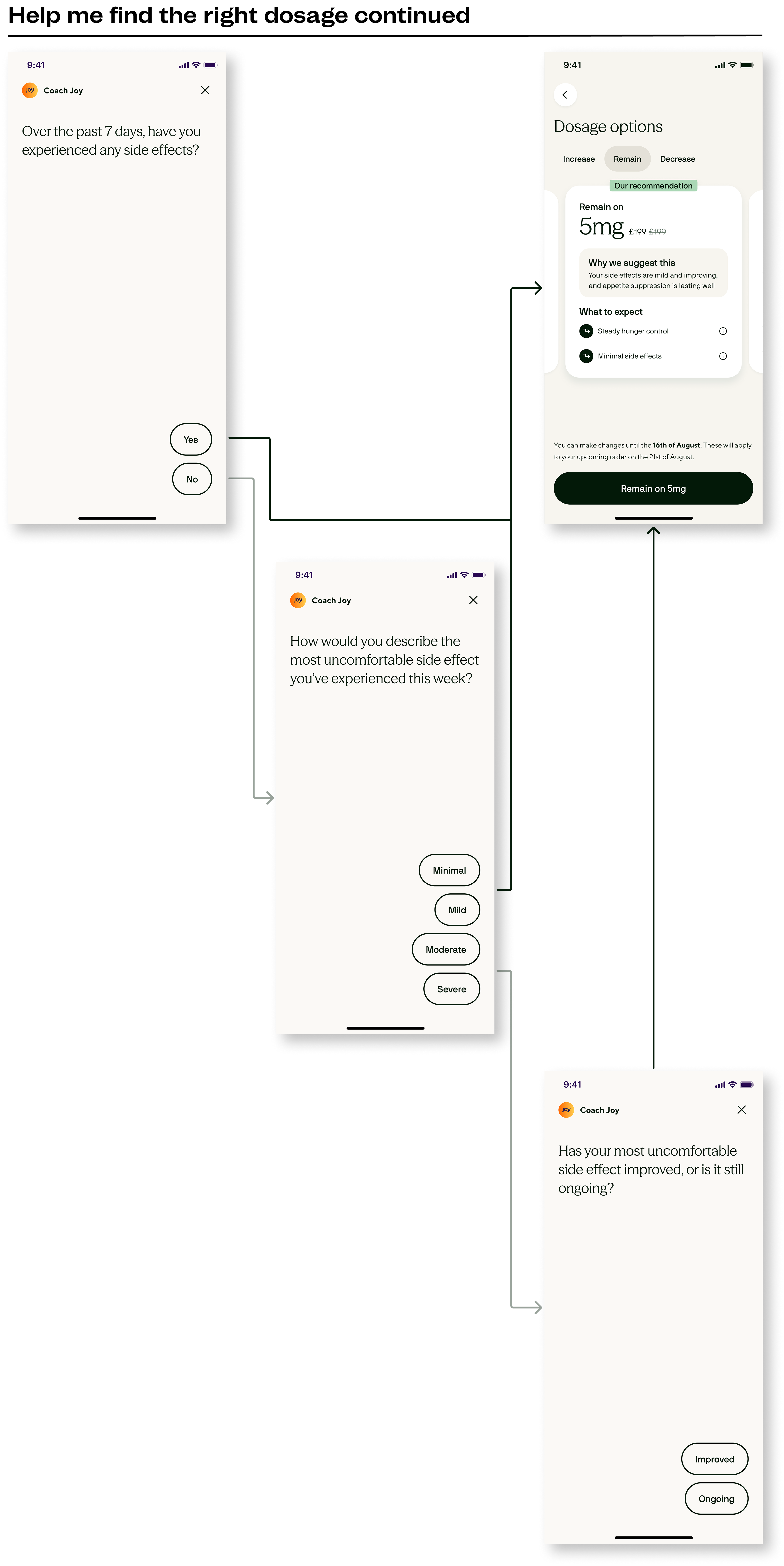
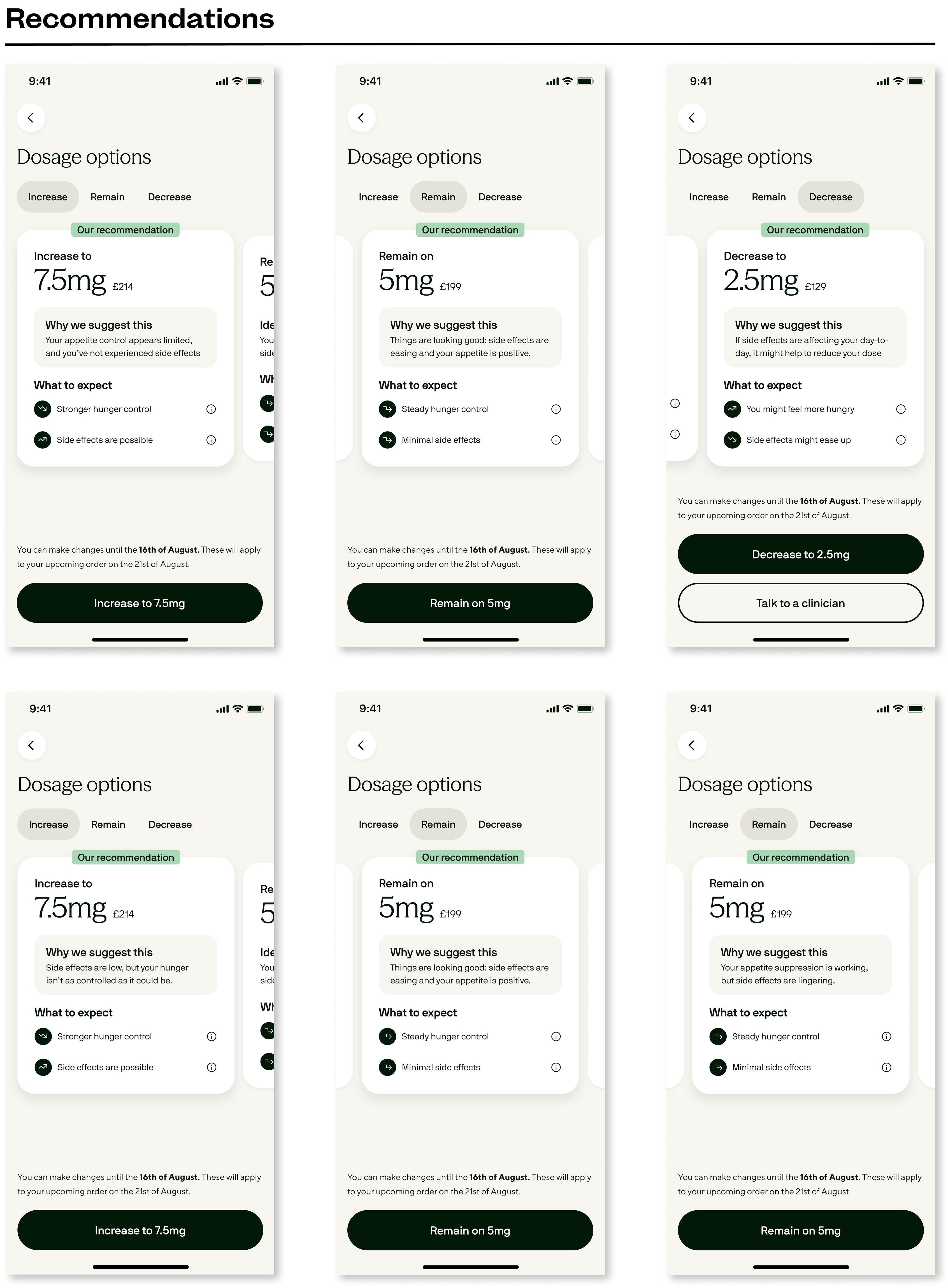
Quick pulse check
With time tight and testing still crucial, I recorded a Loom walkthrough and shared it with our WhatsApp group for fast-turn feedback. I asked four targeted questions:
- How does this make you feel about your next dose decision?
- Is anything missing that would improve confidence?
- How clear and relevant was the recommendation?
- What would you change or improve?
We received 26 open-ended replies offering both sentiment and usability insights. 92% said the update gave them more confidence in managing their dose, and 73% said they wished this version existed when they first started treatment.

"I wish this feature had been available when I first started the medication" - Somers
"I think this feature is [a] definite upgrade as I just went along with the dosage increase without asking why." - Andy
"I really like this. It would make me feel more confident about dosage changes as it offers guidance with reasons, and still allows the customer autonomy and control, which feels very important." - Naomi
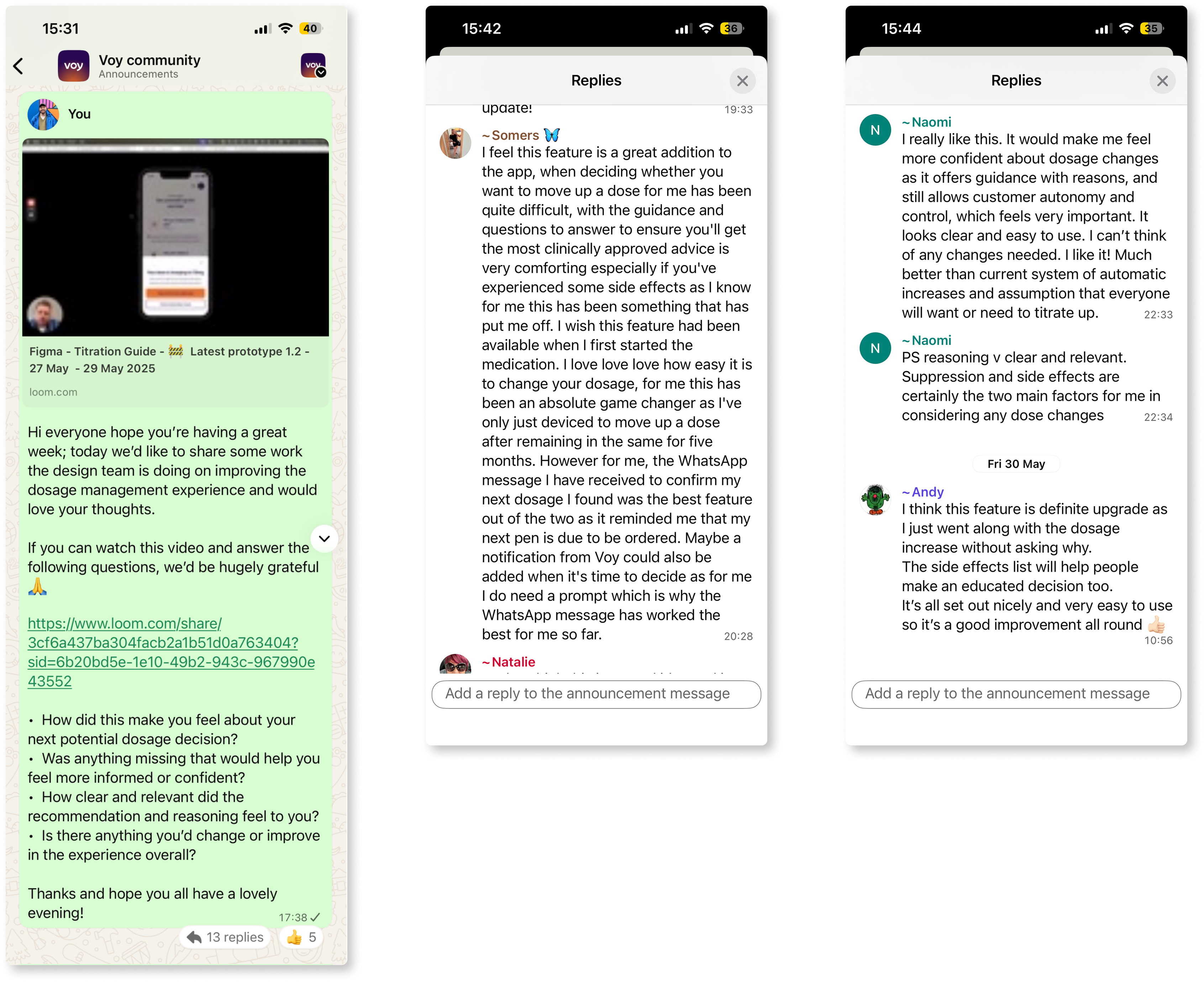
The overwhelmingly positive response confirmed we were building something truly valuable. With stakeholder alignment and user validation in place, we finalised the designs for development handoff.
Numbers on the board
After 6 weeks of running A/B tests, this variant tested successfully, showing a strong indicator to proceed with a 100% rollout. We saw positive pacing towards our success metrics by M3:
- 47% increase in feature engagement; 12% over target
- 64% increase in dose change requests; 7% over target
- 7% decrease in dose-related tickets; 1% behind target
- £92.3K decrease in revenue lost from wrong doses being sent; ~£40K over target

The feature's performance is still being monitored, and it's a little too soon to see if this initiative had an impact on cancellations or retention; however, these metrics showed very strong indicators of a positive initiative. With two massive reductions that were big wins for us:
- ~£9K savings from reducing dose-related tickets
- £303.3K savings from resolving the incorrect doses error; this is huge and as the business scales its order volumes the amount saved will be even greater.

The team and I were enormously pleased and proud, an experience like this with tailored recommendations based on appetite suppression and side effects experience did not exist, making it an industry first that hopefully will continue to give customers a better experience on GLP-1 treatments with VOY.
I then worked on making the designs responsive for our web app users. Our goal is to continue monitoring performance for insights to drive further improvements, while also expanding the customer medical journey through new features.
